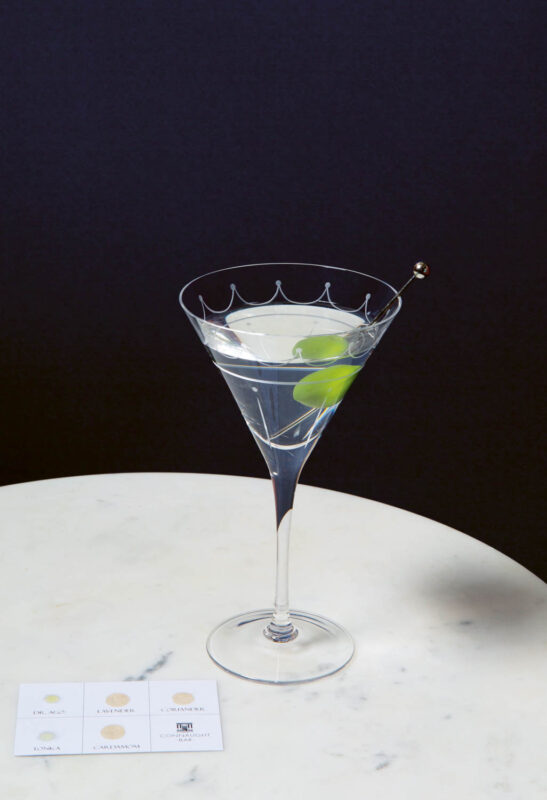
Food & Drink
What & Where to Drink Now
A delicious new book of classic signature cocktails is guaranteed to whet your whistle.
As any cocktail aficionado worth their salt(ed rim) knows, you can’t go to London and not order a martini or weekend in New Orleans without sipping a Vieux-Carré. Sure, you can get versions of these elsewhere, but an ineffable quality elevates certain concoctions beyond their basic ingredients to define particular places and times.
Signature Cocktails, an impressive new book from Phaidon distills that ethos to highlight 200 drinks across 600 years of mixology. Just talking with its author, Amanda Schuster, made us thirsty.
Digital Party: We can have a martini anywhere but you designate some as signature experiences. What’s the difference?
Amanda Schuster: Almost anybody can make a basic martini. But if you order one at Duke’s in London, for example, every base spirit is already frozen. And they pour their house vermouth in the glass, swirl it around, dump it out on the carpet—and everybody laughs. They’ve heard this a million times a day, but it’s still a kick. You just can’t get that anywhere else. Nobody else has this shtick.



DP: We were surprised to learn The Caesar originated in Calgary, not Toronto. What cocktail backstories surprised you?
AS: I didn’t know about the Periodista, the signature cocktail of modern-day Boston. A local bartender found it in an old promotional spirits pamphlet when he was tasked with coming up with a Latin–themed drinks menu in the 1990s.
It’s basically a Cuban daiquiri from the 1920s but with apricot liqueur. People loved it and they started making it all around Boston. Now you can walk into any bar there and say, I want a Periodista, and they know exactly what you’re talking about.
DP: Espresso martinis are on every happy hour menu in New York these days. How do cocktails come back into fashion?
AS: Sometimes a person can cause a revival. The 1970s version of the Tequila Sunrise is a great example of that. Somebody served it to Mick Jagger. He thought it was delicious. And suddenly every bar in the U.S. had to have the ingredients.
Another reason is better ingredients. In the case of espresso martinis, coffee liqueurs today are so much better than Kahlúa.



DP: We have to believe that if worms were served in tequila, gross things have been served in other drinks, too.
AS: God, there’s all kinds. The Grasshopper Gibson at Mexico City’s Hanky Panky comes with a dried grasshopper, a Mexican delicacy. The cocktail is actually a variation of a Gibson, not the creamy dessert drink. It’s mixed with Sotol instead of vodka or gin and has all the flavors of a tlayuda, a crunchy Oaxacan taco. I like it actually, it tastes quite nutty, but there’s no mistaking that’s a grasshopper on your cocktail pick.
DP: You’ve talked about bringing tonka beans back from the UK, because they’re illegal here. What else should we be stowing in our suitcases?
AS: Cuban rum. You still can’t buy it in the U.S., so if you want to make any of the Cuban drinks in the book, do yourself a favor and buy a 1L bottle of Havana Club the next time you’re in Europe.
DP: We love to host dinner parties at DP. What should become our signature punch?
AS: The Fish House Punch, from the Colony Club outside of Philadelphia in the 1730s, is my favorite. Historian David Wondrich has said it should be taught as part of the American history curriculum. It’s so good and so easy to make: All you have to do is peel a bunch of citrus, put it in a bowl, cover it with sugar, and let it turn to syrup. Then, dump it all into a punch bowl and add a lot of booze.
DP: And just serve over ice?
AS: It probably wasn’t served over ice originally, which made it extremely potent. But my biggest pro tip for whenever you’re making a communal drink is: Freeze a small bowl of water the night before and put that giant ice cube in your punch bowl after you’ve mixed everything up. It melts slowly. It also looks really pretty.
This interview has been condensed and edited for clarity.

Hero photo: Her Name is Rio cocktail by Andy Sewell



